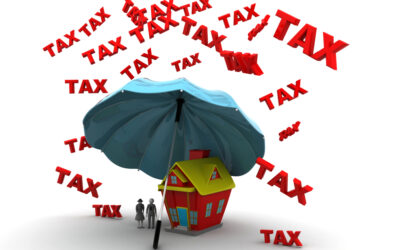What are the tax and investment considerations for a Granny Flat above versus a Tiny Home below? Income Tax Return Reporting - Income Streaming Tiny Homes Tiny home ownership does not have to follow the ownership interest of the underlying property ownership. For...
Uber Driver Taxation Lifecycle Example
 Worked example: Lifecycle of an Uber driver
Worked example: Lifecycle of an Uber driver
Issue
John commenced an Uber operation on 1 April 2016. He went to the ATO website and understood he was required to apply for an ABN and GST, which he did. The car he initially used was the family car. After six weeks of driving Uber, he starts to use it more often and on weekends.
In August 2016, John goes to his accountant to complete his tax return. They realise that the records that John has kept is minimal except for the information provided by Uber. The records show that during the period April 2016 — June 2016, John drove 1,150 kms and made a gross amount of $3,270. Uber took a management fee of 20% of the gross amount.
After the August meeting, John started driving Uber on a full-time basis. On the accountant’s recommendation, he completed a log-book and started collating all records for expenses for driving. The log-book for the next 12 weeks determined that the business use percentage for his vehicle was 91%.
For the 2016/17 financial year, the gross receipts for Uber driving was $52,170. The management fee was $10,434.
In January 2017, John decided to trade-in his old car for a used car at a local dealership. He paid $16,000 after trade-in of $6,000, via a finance agreement. He kept the same business percentage of 91%.
During the 2016/17 tax year, John has determined that he drove approximately 38,800 kms.
John found new employment in September 2017, eventually disabled Uber driving in January 2018.
The entire time John used Uber, 50% of his mobile phone usage related to business. His expense was $100 per month (GST inclusive).
The details of the motor vehicle expenses (inclusive of GST) were given to the accountant for each year.
|
Expense |
2016/17 |
2017/18 (to Jan.) |
|
Kilometres driven (total) |
38,800 |
10,500 |
|
Gross income |
$52,170 |
$16,800 |
|
Registration |
$524 |
$534 |
|
Insurance |
$1,100 |
$1,050 |
|
Repairs |
$1,200 |
$600 |
|
Interest on loan |
$1,288 |
$1,268 |
To calculate all income and indirect taxes for John from the 2015/16 income year through the 2017/18 income year.
Solution
GST
|
Item |
Calculation |
Amount |
|
2015/16 income year |
||
|
Gross income |
$3,270 ÷ 11 |
$297 |
|
Less: |
||
|
Mngt. fee |
$654 ÷ 11 |
(59) |
|
Mobile phone |
$100 × 3 × 50% ÷ 11 |
(14) |
|
Net GST |
$224 |
|
|
2016/17 income year |
||
|
Gross income |
$52,170 ÷ 11 |
$4,743 |
|
Less: |
||
|
Mngt. fee |
$10,434 ÷ 11 |
(948) |
|
Insurance |
$1,100 × 91% ÷ 11 |
(91) |
|
Car repairs |
$1,200 × 91% ÷ 11 |
(99) |
|
Car purchase |
$22,000 × 91% ÷ 11 |
(1,820) |
|
Mobile phone |
$100 × 12 × 50% ÷ 11 |
(54) |
|
Fuel – old car |
15,520km × 91% × 7.5L ÷ 100 × $1.40(per L) = $1,483 ÷ 11 |
(135) |
|
Fuel – new car |
23,280km × 91% × 6.4L ÷ 100 × $1.40(per L) = $1,898 ÷ 11 |
(172) |
|
Net GST |
$1,424 |
|
|
2017/18 income year |
||
|
Gross income |
$16,800 ÷ 11 |
$1,527 |
|
‘Sale’ of car at MV |
$14,000 × 91% ÷ 11 |
$1,158 |
|
Less: |
||
|
Mngt. fee |
$3,360 ÷ 11 |
(305) |
|
Car repairs |
$600 × 91% ÷ 11 |
(49) |
|
Mobile phone |
$100 × 7 × 50% ÷ 11 |
(32) |
|
Fuel |
10,500km × 91% × 6.4L ÷ 100 × $1.40(per L) = $856 ÷ 11 |
(78) |
|
Net GST |
$2,221 |
Notes:
2015/16 — Cannot give clear GST substantiation for vehicle costs. Therefore, no claim can be made.
2016/17 — No GST payable on trade-in of vehicle as no purchase amount claimed as a creditable acquisition (per s 129-15 of the GST Act).
2017/18 — Insurance costs non-deductible as payment in January (date of purchase), and relates to year where car not used for income producing purposes.
Motor vehicle balancing adjustment assumes market value in January 2018 is $14,000.
Income tax
|
Item |
Calculation |
Amount |
|
2015/16 income year |
||
|
Gross income |
$3,270 − 297 |
$2,973 |
|
Less: |
||
|
Mngt. fee |
$654 − 59 |
(595) |
|
Car expense |
1,150km × 0.66 (cents per km) |
(759) |
|
Mobile phone |
$150 − 14 |
(136) |
|
Taxable income |
$1,483 |
|
|
Tax at marginal rates − assume rate is 19% + 2% Medicare levy |
$311 |
|
|
2016/17 income year |
||
|
Gross income |
$52,170 − 4,743 |
$47,427 |
|
Less: |
||
|
Mngt. fee |
$10,434 – 948 |
(9,486) |
|
Registration |
$524 × 91% |
(477) |
|
Insurance |
$1,100 × 91% − 91 |
(910) |
|
Car repairs |
$1,200 × 91% − 99 |
(993) |
|
Fuel |
$3,381 − 307 |
(3,074) |
|
Interest on loan |
$1,288 × 91% |
(1,172) |
|
Depreciation (LVP) |
$22,000 × 91% − 1,820 |
(18,200) |
|
Mobile phone |
$100 × 12 × 50% − 54 |
(546) |
|
Taxable income |
$12,569 |
|
|
Tax at marginal rates − assume only source of income |
$0 |
|
|
2017/18 income year |
||
|
Gross income |
$16,800 − 1,527 |
$15,273 |
|
Balancing adjustment |
$14,000 × 91% − 1,158 |
$11,582 |
|
Less: |
||
|
Mngt. fee |
$3,360 − 305 |
(3,055) |
|
Car repairs |
$600 × 91% − 49 |
(497) |
|
Fuel |
$856 − 78 |
(778) |
|
Interest on loan |
$1,268 × 91% |
(1,154) |
|
Mobile phone |
$100 × 7 × 50% − 32 |
(318) |
|
Taxable income |
$21,053 |
|
|
Tax at marginal rates − assume rate is 19% + 2% Medicare levy |
$4,421 |
|
Notes:
2016/17 — Depreciation is total cost of car, as the amount is under the $20,000 limit for low cost assets.
2017/18 — Insurance and registration costs non-deductible as payment in January (date of purchase), and relates to post income producing activity.
Motor vehicle balancing adjustment assumes market value in January 2018 is $14,000.
Total liability across three financial years: $3,869 (GST) + $4,732 (income tax) = $8,601
Tax liability as a percentage of gross revenue (GST inclusive) = $8,601 ÷ $72,240 = 12%
As with any small business client, an individual commencing a business of Uber driving should put away a percentage of revenue earned for future taxation liabilities. This can alleviate any cash flow problems.
Last reviewed: 22 February 2017 Courtesy of CCH – iKnow
A recent Federal Court case has confirmed that Uber drivers are required to remit GST on all fares.
This effectively means that the treatment of income and expenses is the same as driving a taxi.
Input tax credits for motor vehicle expenses are also available at the business use percentage, and specific rules for purchasing new vehicles will apply.
Our firm would be pleased to discuss these matters with you further. Please do not hesitate to contact us if you need help with any registrations.



